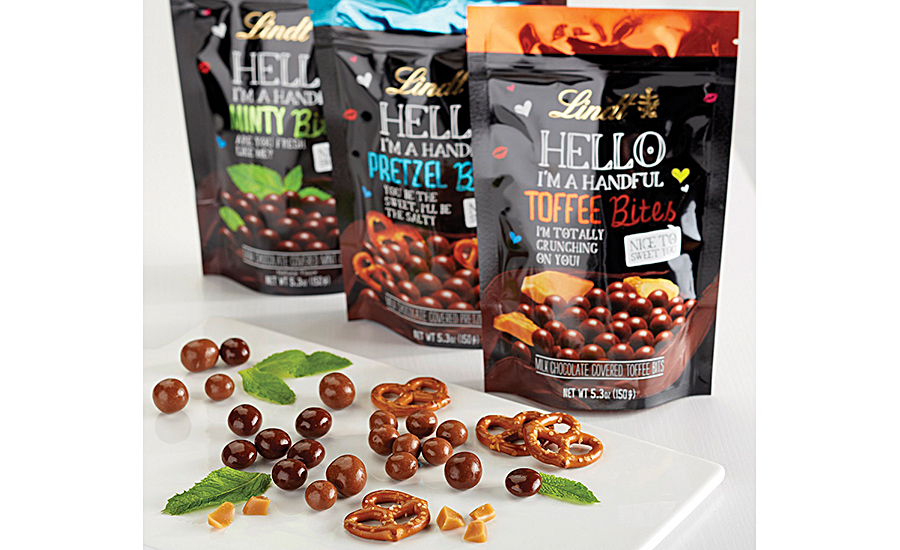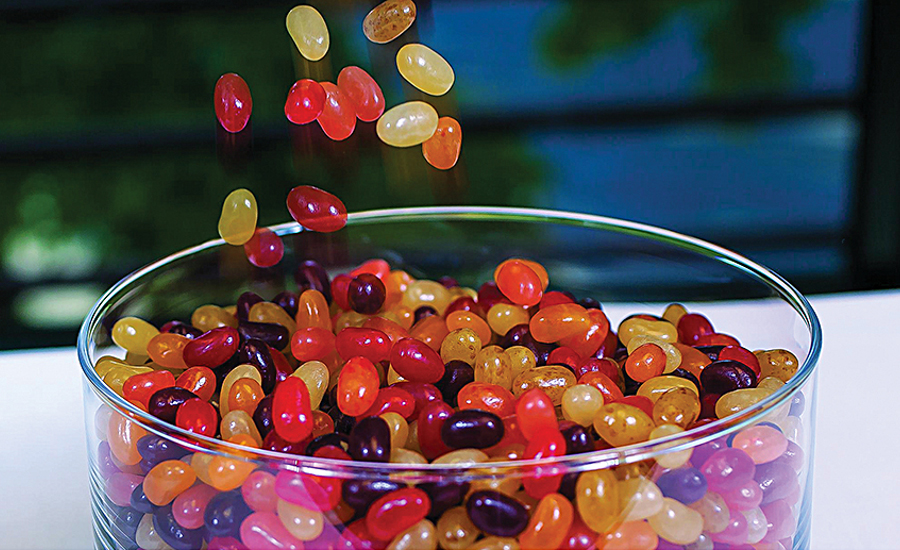Want to talk about the chocolates, sugar confections and gum market? Think of it like a sweet-and-sour candy.
Here’s the sour patch. Other snacks now present greater competition. Consumers are increasingly concerned about health and obesity. Manufacturers also face more uncertainty with raw material supply issues and costs. Yet what’s sweet is that consumers do not want to give up their everyday treats. As a result, new product activities continue as manufacturers look for ever-creative new ways keep consumer interest and drive sales.
Innova Market Insights finds that the global confectionery market is increasingly competitive, and concentrated, with ongoing initiatives by the leading players looking to find new opportunities to maintain or even increase share. In the light of this, new product activity likely will continue apace—despite global and local economic difficulties.
Estimates of the size of the confectionery market continue to vary widely, largely reflecting varying definitions and what is included. Some current estimates put the global market at approximately US$200 billion a year, with overall growth of about 2%. The North American market accounts for less than one-fifth of that and is seeing slower growth, reflecting its relative maturity; sales of sugar confectionery and chewing gum are virtually static and chocolate is seeing only limited value growth.
For the record, global confectionery industry new product activity appeared to be fairly static in 2015, according to Innova Market Insights data. Europe accounted for a dominant share of about 50%, reflecting the large number of countries involved, as well as the high per capita consumption levels and the established nature of the industry and market.
Asia has been increasing its share of activity in recent years. This reflects rising demand in many markets (both established and emerging), and reflects increasing consumer spending power and rising interest in Western-style products. Asia takes second place overall in terms of launch activity, with 18% of the 2015 total. It now ranks ahead of North America, at 14%, and Latin America with just more than 6% of new product introductions.
How about a look at global category trends? After some difficult years, chewing gum saw a double-digit rise in launch activity during 2015. Meanwhile, chocolate launch numbers were more stable and sugar confectionery introductions fell. As a result, chocolate’s dominant share rose marginally from 60% to 61%, while sugar confectionery’s share fell from 35% to 33% and chewing gum’s share of new launches rose from just under 5% to 5.5%.
The US accounted for just under 12% of total global confectionery introductions in 2015, with launch levels rising slightly over 2014. The breakdown was not dissimilar to the global picture, although sugar confectionery launches had a slightly higher share and chocolate slightly lower, with chewing gum about the same.
Chew on These Facts
The US chewing gum market is billed as the world’s largest market with sales of more than US$3 billion per year. Sugar-free varieties dominate the market with more than 80% of offerings. In terms of launch activity, Innova Market Insights recorded that 76% of US gum introductions carried a sugar-free claim in 2015, compared with the global total of 68%. Despite considerable publicity over the use of the natural sweetener stevia for sugar reduction, the bulk sweetener xylitol appears to be the non-sugar sweetener of choice, featuring as an ingredient in nearly half of 2015 gum introductions.
Within the chewing gum market, new flavor varieties offered increasingly sophisticated and complex formats, such as Project 7 Gourmet Gum’s Red Velvet Cupcake, Summer Snow and Birthday Cake sugar-free gums. There also is ongoing interest in breath-freshening with the launch of gums featuring green tea in both mainstream and more specialist oral care formats. Launches included Hager Pharma Green Tea Chewing Gum and Spry Dental Defense with green tea; as well as Mentos Pure Fresh and Spry Sugar-Free varieties.
Choose Chocolate
Elsewhere, new product activity continued apace in the US chocolate confectionery sub-category. True innovation remains relatively limited and most of the major brands are long-established, having been on the market for many years. This reflects the highly competitive nature of the market and the expenditures necessary to establish a new brand.
One notable recent exception has been the Hello brand from Lindt, which first launched in Germany in 2012 as a premium chocolate brand targeted at younger adult consumers. It was reported to be the company’s most successful launch in recent years, gaining sales worth approximately US$37.2m in its first 15 months on the German market.
Launches elsewhere in Europe and in the US followed and the range since has been developed further, with the sticks, bars and minis on the US market extended in 2015 to include a Hello Bites range, marking the first bite-sized chocolates in the Lindt portfolio. There are pouch-packed sweets—featuring Minty, Pretzel and Toffee varieties—particularly targeted to dynamic adult sharing market. It is early days, however, and it remains to be seen whether the initial success of the brand can be built into a sustainable, multi-national name.
This kind of example aside, recent new product activity has tended to focus around the development of existing brands, extending formats and/or flavors (sometimes on a limited edition and/or seasonal basis). Limited-edition varieties of market-leading chocolate bars continue to debut, such as Mars’ Snickers Crisper and Milky Way Marshmallow with Caramel introductions in 2015.
Another area of interest is the bagged and bite-sized chocolates sector. This has particularly involved sharing lines and activity has focused on established chocolate brands in this dynamic area. In the US, activity included new formats and flavors, including some limited editions. Mars’ M&Ms, for example, launched special edition Harvest Blend varieties for autumn 2015. The M&Ms range now includes Milk Chocolate, Peanut, Peanut Butter, Pretzel, Crispy, Almond, Dark Mint, Dark Chocolate, Dark Chocolate Peanut; an M&Ms bar; as well as M&Ms Mega with three times more chocolate (launched in 2014).
Meanwhile, Hershey, the iconic US chocolate bar, has long featured chocolates under its Hershey’s Kisses name. Now, the company has a growing range of packaged bite-size lines, including Hershey’s Nuggets in bags and Hershey’s Drops in stand-up, resealable pouches. Most recently, in spring 2015, the company launched Hershey’s Caramels in Milk Chocolate and Dark Chocolate varieties. These items feature chocolate-covered candies with sea salt, molasses and dairy butter—either wrapped in milk or dark chocolate. They come packaged in 7oz stand-up pouches.
Chocolate blocks and tablets have a relatively low share within total chocolate launches in the US, according to Innova Market Insights data. Looking at new product launches, the US came in last year with 27% of new chocolate block or tablet products, which compares to a global average of just over one-third, rising to over 40% in Australia/New Zealand.
This reflects a higher level of US consumer interest in other types of chocolate, such as multi-packs and bite-size products. However, the US premium chocolate sector has seen ongoing activity in new blocks and/or tablets with a range of upmarket flavors and inclusions. In 2015, for example, new product activity included superfruit extensions to Lindt’s Excellence range. These new varieties included Lychee, Pomegranate and Blackberry with Açai. There have also been rising levels of interest in organic, fair trade and defined-origin-cocoa products.
The rising sophistication of chocolate blocks and tablets—with different shapes and formats and more additional ingredients—has pushed it toward the multi-pack sector. As a result, it’s become more difficult to differentiate between the two sectors. Meanwhile, there’s growing competition in these areas, even involving products that target different eating occasions. There also is a growing trend for brands to present single-serve bars in a multi-pack format while larger sizes are presented as blocks for sharing.
Candy Craze
Brand extension and sharing trends also are evident in the more fragmented sugar confectionery market, where opportunities for new shapes, flavors and blends allow a diversity of product activity.
One interesting wrinkle involves well-known sugar confectionery brands appearing in other countries. One example involves Mondelez International, which took its Sour Patch Kids brand to France in mid-2015. There, Mondelez used its Carambar brand to introduce “Very Bad Kids” in two soda- and fruit-flavored lines, each with five varieties. The candies come in the familiar Sour Patch shapes and Mondelez describes the candy experience as “sour then sweet.”
Last year also saw some well-known sugar confectionery brands extend their lines with some interesting twists. Wrigley introduced a Superfruit mix in its Starburst fruit chews line. New single-serve flavors include Raspberry Pomegranate, Strawberry Superfruit, Passionfruit Punch and Blueberry Açai. Wrigley also extended its Life Savers range with a Gummies Tangy Collisions brand, featuring gummies with two flavors—one sweet and one tangy—in each candy.
Jelly bean specialist Jelly Belly Candy Company had fun with flavors. It created a range of new offerings—from Champagne to Pancakes & Maple Syrup (limited edition). Last September also saw Jelly Belly move into a new direction with organic, non-GMO jelly beans in 10 flavors as well as five more sour flavor varieties. The company also launched six organic fruit flavored snacks in rainforest animal design and shapes. Mixes in this collection include a Berry Cherry mix with Berry, Strawberry and Cherry; and Strawberry Apple mix with Strawberry and Apple.
Interestingly, organic options are not as popular in confectionery as in some food and drink sectors. However, it’s a growing topic, particularly with more consumers expressing interest in clean labels. Innova Market Insights data show that more than 6% of global confectionery launches (rising to 10% in the US) had an organic positioning during a 12-month period to the end of October 2015. Chocolate had the highest global share with 8%, ahead of sugar confectionery with just under 4% and chewing gum with just under 1%. The US was well ahead of this for both chocolate and sugar confectionery, with 12% and 8% of launches, respectively, going to organic options.
Originally appeared in the April, 2016 issue of Prepared Foods as Sweet Snacking.















